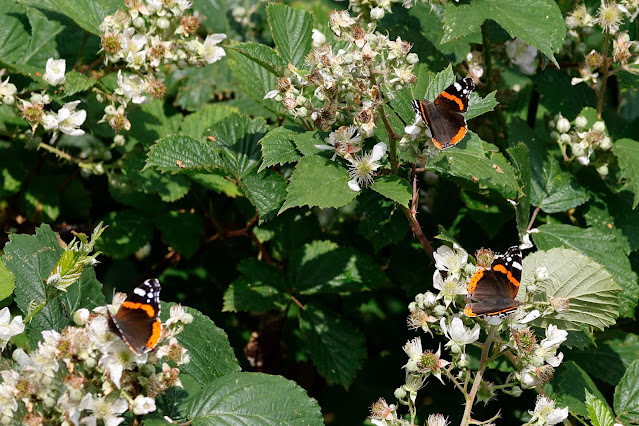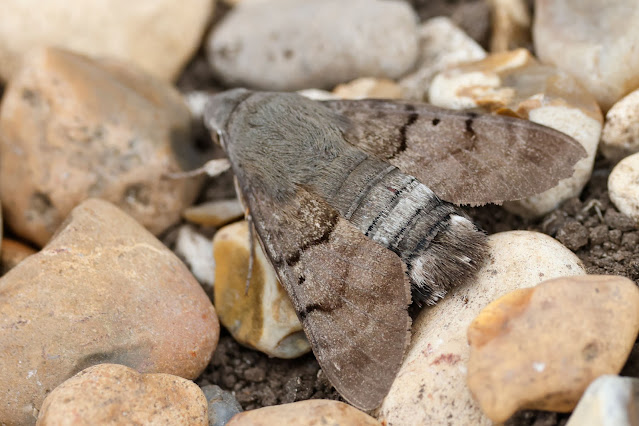The first Monday I have not either been at work, sick or on a public or work holiday for just under 44 years, I am retired, so to celebrate I arranged to meet Ian at Old Winchester Hill. It was a fresh morning, sunny intervals and a fresh breeze blowing. From the car park we headed out along the top path towards the bronze age hill fort.
Tall grass lined both sides of the path and it was being blown about by the stiff breeze, however I was not surprised to see a Marbled White sitting on the flower head of a Scabious amongst the grass. This was one of the butterflies we both had hoped to catch up with this morning.
As well as the Marbled Whites there was another special butterfly found at this reserve, the Dark-green Fritillary and a little further along the path one came up from the grass and then flew back down to settle out of the wind amongst the bramble leaves.
The Dark Green Fritillary is the most widespread fritillary
found in the British Isles and is usually seen as it flies powerfully over its
grassland habitats, frequently stopping to nectar on Thistles and Knapweed. It
gets its name from the green hue found on the underside of the hindwings, which
are peppered with large silver spots.
The fresh wind meant it did not raise its wings to show off the green hue and spots before it flew off.
A Yellowhammer sang from a nearby bush, showing well against the distant clouds and fields.
Walking from the car park there had been quite a few Red Admirals about and very soon it became apparent that there was in fact a lot. The brambles appeared to be covered and they would fly up from almost anywhere.
In the sheltered spot there were many other butterflies joining the Red Admirals.
Small Skippers
Plus many more Marbled White.
We decided to walk to the fort by the track that follows the slope. Great views as always
The north slope of the fort was sheltered from the wind and the butterflies were showing well.
Male and female Marbled White, the female having a brown chequered underwing to the male's black.
The flowering thistles were a big attraction to the Marbled Whites.
There were more Dark-green Fritillaries on the slope. This female was the easiest to get to.
Females are somewhat-easier to see when egg-laying, where
they intersperse periods of nectaring with basking and bouts of egg-laying,
when they will crawl deep in vegetation, searching out the lushest growths of
larval foodplant mostly Dog, Hairy and Marsh Violet, before laying a single egg, although several eggs are often
laid in the same area.
To save me having to write up the history of the ancient fort here at Old Winchester Hill I thought it would be better to take a photograph of the information provided by Natural England
From the fort we followed the slope path once again and then descended the steep slope to the wood at the bottom of the valley. Just before the entrance to the wood the area is sheltered and there were more Dark-green Fritillaries.


















































No comments:
Post a Comment